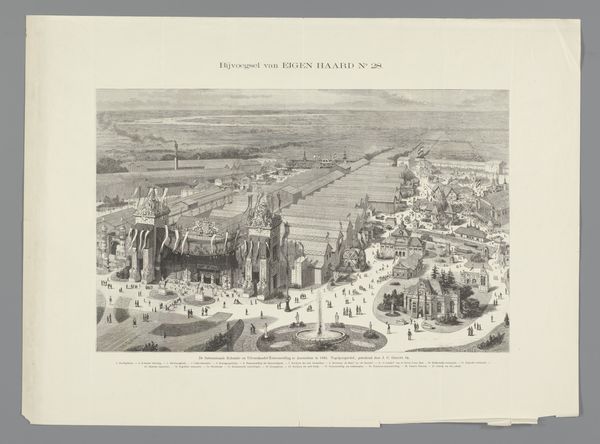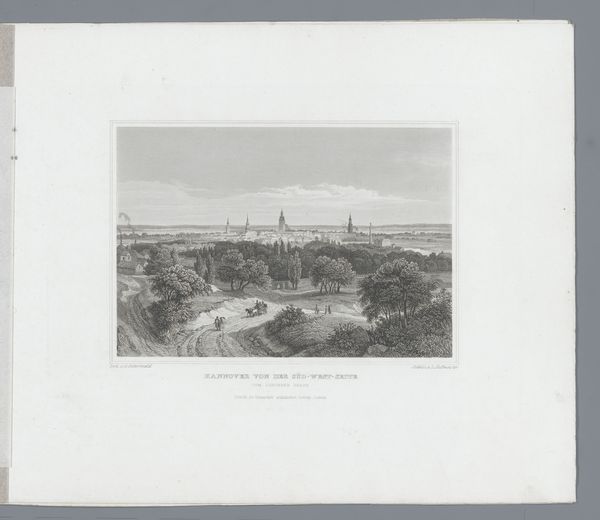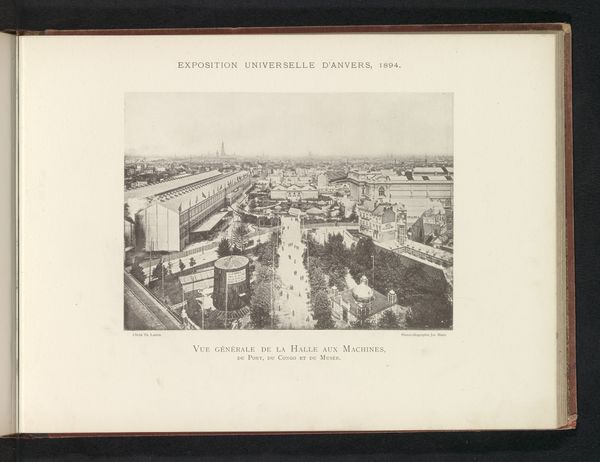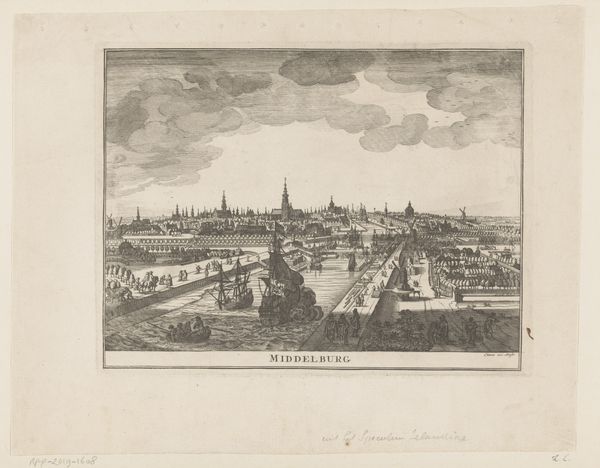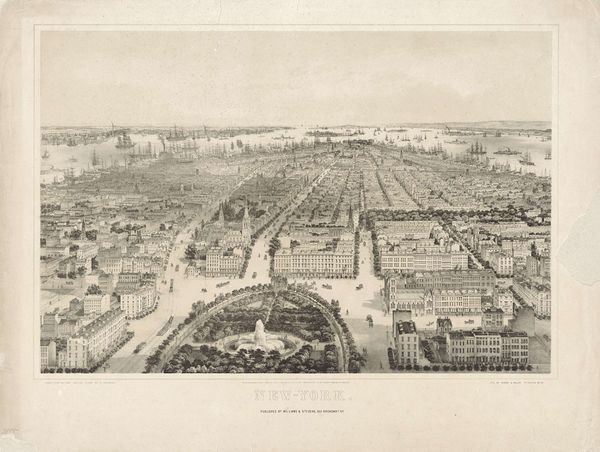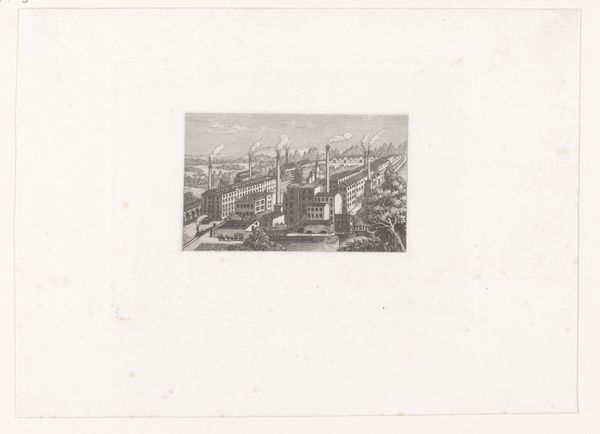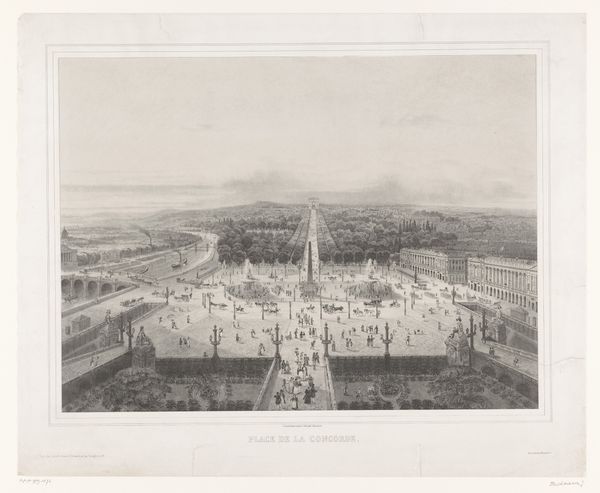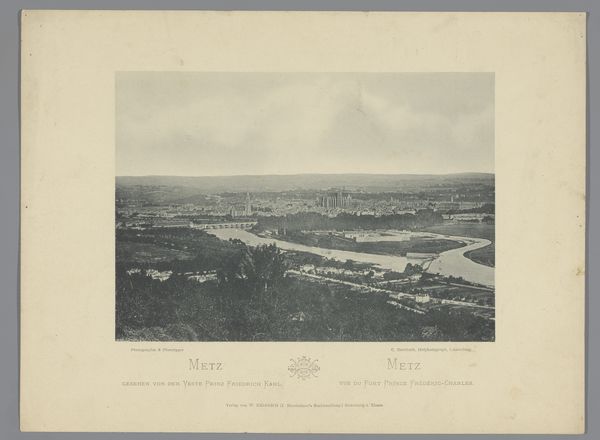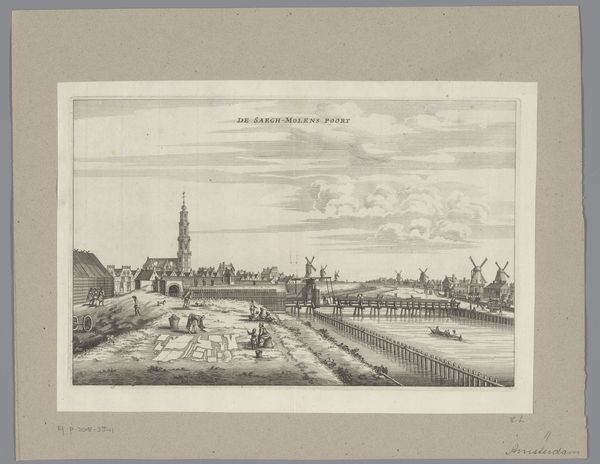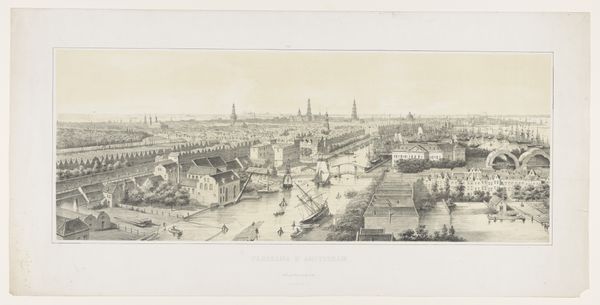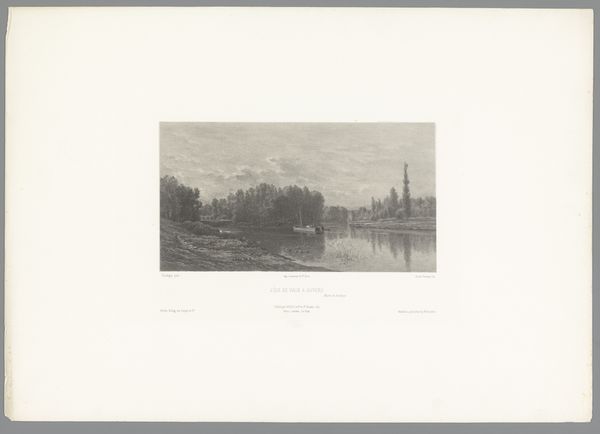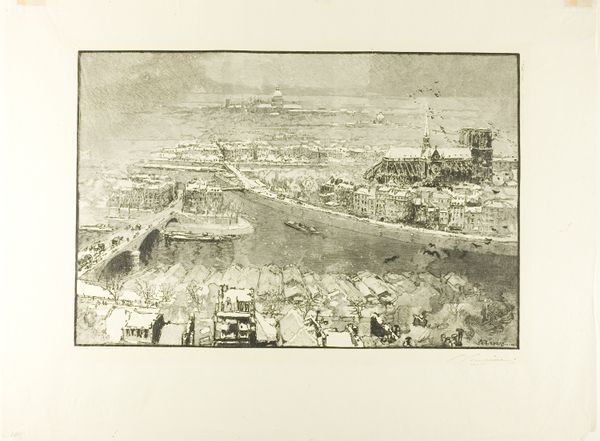
Dimensions: height 148 mm, width 219 mm, height 303 mm, width 380 mm
Copyright: Rijks Museum: Open Domain
Curator: This photographic print, dating from 1860 to 1890, presents a "Panorama of Paris". It is crafted through a lithographic process, offering a detailed cityscape view. What are your initial thoughts? Editor: It's meticulously rendered, isn’t it? The composition, with its elevated viewpoint, creates a fascinating sense of depth. It almost feels like I'm floating above the city, observing this bustling, 19th-century metropolis. Curator: Indeed. Considering it's a reproduction, the materiality becomes intriguing. The choice of lithography as a means of dissemination speaks to a desire to democratize access to images of Paris, making the city's representation more widely available and consumed. The act of reproduction is central to understanding its societal impact. Editor: Absolutely. The interplay of light and shadow across the buildings—notice the way it articulates form, the intricate geometries and urban grain that is so palpable—it's more than mere topography. I mean, it evokes a feeling of expansion and development in that era. Curator: The details in the buildings and streets give a very realistic portrayal of daily life. The print is realism meeting romanticism because we know city development came at a cost, given the labor that built the booming cityscape. We are seeing Paris as a spectacle, not the hands of its laborors. Editor: And I must admit, the tonal range, from the creamy whites to the almost velvety blacks of the roofs and waterways, adds to the charm. It is about aesthetics, of course. The texture itself is very alluring. The anonymous maker understood tonal manipulation well, regardless of context. Curator: Considering that photographs at the time were a novelty, disseminating Parisian photographs via print suggests how photography was perceived and consumed by the middle and upper class, shaping perspectives and reinforcing socio-economic distinctions through accessible imagery. Editor: It does give you pause. I walk away appreciating not just the subject matter, but the craft and skill employed in creating this illusion of a Parisian panorama through a lens filtered with care and artistic license. Curator: It is fascinating to consider how technology, labor and photographic innovation shaped our understanding and consumption of cities in the nineteenth century. We see an aesthetic veneer but it hides the underbelly of Paris' expansion, doesn't it?
Comments
No comments
Be the first to comment and join the conversation on the ultimate creative platform.

